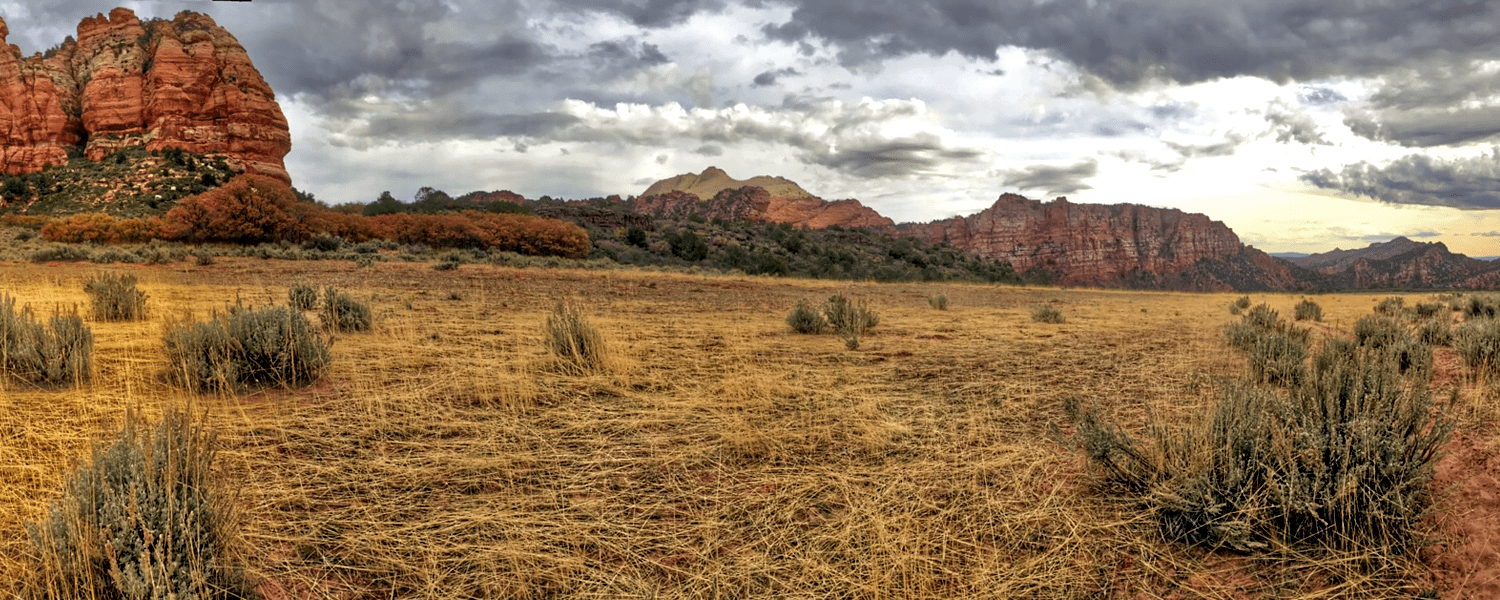If you are planning a trip to Zion National Park, one of your big questions is probably “What will the weather be like when we get there?” When most people think of desert climates, they picture hot and dry. While we definitely have our fair share of that in June, July, and August, we also have four very distinct seasons. Depending upon the month of your visit, there are certain things you should do to prepare and certain precautions you should take to be ready for the elements.
SPRING
The weather can vary greatly during the months of March-May. On average, Zion receives the most precipitation in March. Rain during any time of the year can bring flash floods. Prepare accordingly by always checking the current and forecast weather conditions, as well as any park warnings.
Daily average temps are 63°F in March, 73°F in April, and 83°F in May. During the course of a day, temps can vary up to 30°F, so dressing with layers is the answer to being prepared for a day out during the Spring. Don’t let the rain fool you – this is still a dry, desert climate and hydration is VITAL! Bottled water is not sold inside the park, so it is critical that you bring something to carry your own water in. There are numerous refill stations for your water bottle or pack bladder in the park. My Hyro Flask has survived miles of hiking adventures:
SUMMER
Summer in Zion starts in June and goes through September. The summer months are the hottest months in the park, with average temperatures being in the 90s. Even though these are the hottest months, that doesn’t mean that they are completely dry. July through September commonly having afternoon thunderstorms that can cause large flash floods throughout the park, so always be sure to check the forecast before heading into canyons. If there is a thunderstorm in the forecast, stay out of canyons, creek beds, and away from the river.
To prepare for Zion in the summer, make sure you have sun hats, sunscreen, and are drinking plenty of water and eating at least some salty snacks. Salty snacks will help replace any electrolytes that you may be sweating. Although you may not feel like you are sweating because of the lack of humidity, but you definitely are.
This is one of my favorite daypacks to pack all my gear in.
FALL
Zion National Park area, UT
Fall is an ideal time for outdoor adventures in Zion. The temperatures have begun to drop, with daily highs in the 60s and 70s. Temperatures can drop significantly at night, so make sure you have layers to keep warm as the sun goes down. Same as with visiting in the spring, it is a good idea to have a raincoat or poncho handy in case of rain.
As always, hydration is still imperative because of dry conditions. The dropping temperatures also bring stunning autumn leaves and other fun fall events!
WINTER
Zion National Park area, UT
Winters in Zion are commonly cold and wet, with the majority of our precipitation falling during December through February. December is the coldest month of the year here, with average daily temps in the low 40s. To prepare for a day out in this Winter Wonderland, make sure you have shoes suitable for snow and ice, as well as a warm jacket, hat and gloves. There may be road and trail closures for several days after a storm while snow and ice melt, so make sure to check the trail conditions at the Zion National Park Visitor Center.
While it may be hard to imagine visiting Zion in winter, it is a great opportunity to experience the park without having to fight the crowds and gives you the opportunity to see a side of Zion that many only get to see in pictures.
Regardless of what time of year you choose to visit, you can have a wonderful time in Zion by taking a few safety precautions and being prepared for the elements. Wearing clothing appropriate to the temperatures and choosing your activities based on weather conditions will go a long way toward helping you enjoy your time here. As always, make sure to pack your camera, because Zion is a stunning destination year round!
For additional park information, including average temperatures and precipitation, here are a few links we’ve found helpful:
For more Zion Weather information, please visit the National Park Service website:
https://www.nps.gov/zion/planyourvisit/weather-and-climate.htm


